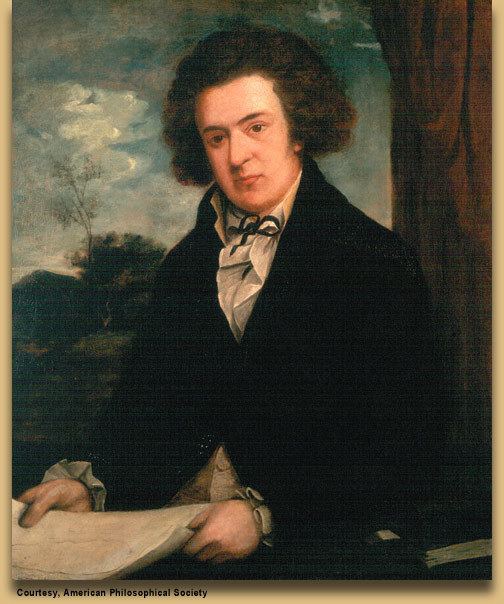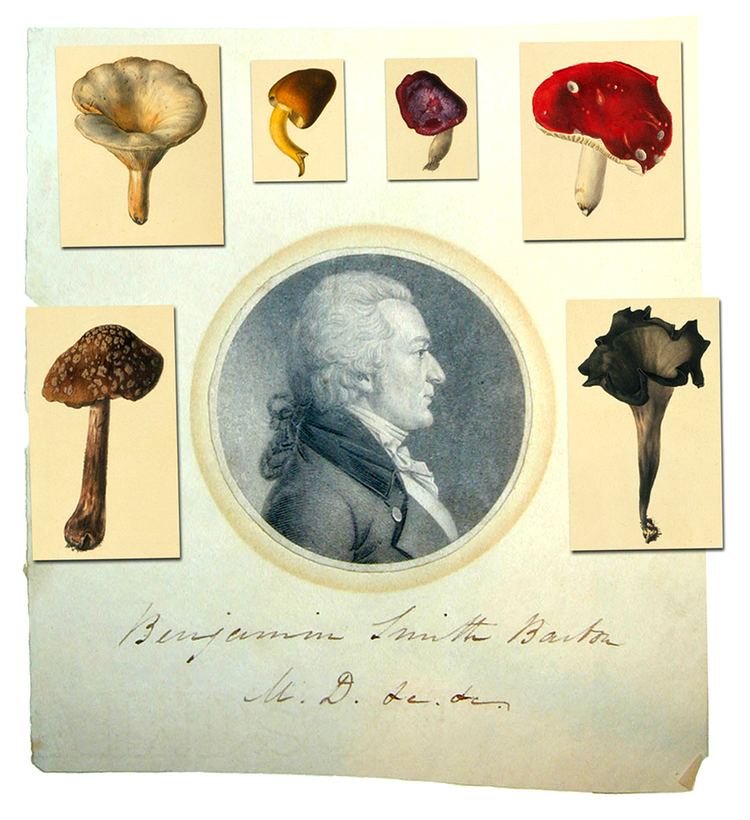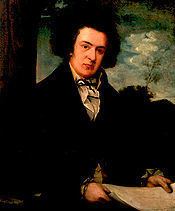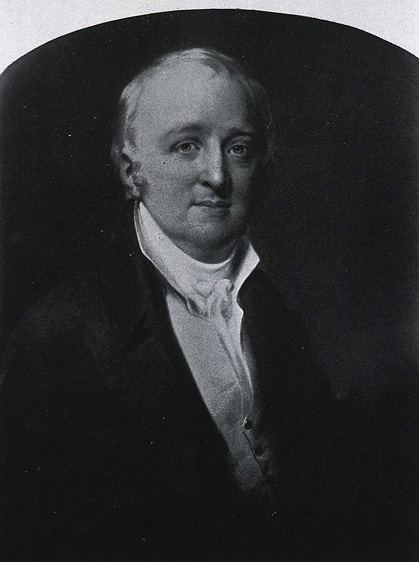Nationality American Parents Thomas Barton Siblings William Barton | Name Benjamin Barton Nephews William P. C. Barton Role Botanist | |
 | ||
Born February 10, 1766Lancaster, Pennsylvania ( 1766-02-10 ) Books New Views of the Origin of the Tribes and Nations of America | ||
Benjamin Smith Barton (February 10, 1766 – December 19, 1815) was an American botanist, naturalist, and physician.
Contents

Biography

Barton's father, Rev. Thomas Barton, was an Irish immigrant from Carrickmacross who opened a school near Norristown, Pennsylvania in 1751. His mother was Esther Rittenhouse, sister of astronomer David Rittenhouse.
Education

Between the years 1780-1782, Barton studied at York Academy in Lancaster, Pennsylvania. Two years later, he attended the College of Philadelphia School of Medicine, studying medicine under Dr. Thomas Shippen, and attended Dr. Benjamin Rush's lectures in 1785. Young Barton also accompanied his uncle, David Rittenhouse who had been commissioned to survey the western boundary of Pennsylvania in 1785. The young Barton's travels aroused a lifelong interest in Native Americans. In 1786 Barton transferred to the University of Edinburgh, where he studied for two years before leaving due to financial difficulties, disagreements with two professors, and without a degree. Historians have erroneously claimed that Barton then studied at the University of Göttingen, but this has yet to be verified.
Medical career

Returning to Philadelphia in 1789, Barton practiced medicine. In 1790 he was elected to a fellowship at Philadelphia's College of Physicians. That same year, he succeeded Adam Kuhn as professor of Natural History and Botany at the College of Philadelphia. The College and its medical school merged with the University of Pennsylvania the following year. Two years later, Barton was also elected as a Fellow of the American Academy of Arts and Sciences. In early 1796 Barton succeeded Samuel Powel Griffitts, and became Professor of Materia Medica. Embarrassed by his lack of credentials, Barton purchased a degree of Doctor of Medicine from the Christian-Albrechts University at Kiel in August 1796. In 1813, Barton succeeded to the professorship of the Theory and Practice of Medicine following the death of Benjamin Rush, even as he continued to lecture in natural history and botany. Concurrently with his academic position, he served as a physician at Pennsylvania Hospital from 1798 through his death in 1815.
Publications
Barton corresponded with naturalists throughout the United States and Europe, and made significant contributions to the scientific literature of his day. In 1803 Barton published Elements of botany, or Outlines of the natural history of vegetables, the first American textbook on botany. Barton's work in natural history and botany was often assisted by William Bartram, the traveler, botanist, and artist. Bartram provided the illustrations of North American plants for Barton's 1803 Elements of Botany. From 1798-1804, Barton published a work on medicinal plants, Collections for An Essay Towards a Materia Medica of the United-States. From 1802-1805 Barton edited the Philadelphia Medical and Physical Journal, and in 1803 Barton founded the short-lived American Linnaean Society of Philadelphia.
Barton was also interested in anatomy and zoology, and in 1796, published his Memoir Concerning the Fascinating Faculty Which Has been Ascribed to the Rattle-Snake. In 1803 he published a comparative study of linguistics, Etymology of Certain English Words and on Their Affinity to Words in the Languages of Different European, Asiatic and American (Indian) Nations and a text on the origin of the first American people, New Views of the Origin of the Tribes and Nations of America (1797). He was the editor of the Philadelphia Medical and Physical Journal (1805–1808), one of the oldest scientific publications in the United States.
Barton was elected a member of the American Antiquarian Society in 1814. The Society holds among its collections a number of Barton's publications, as well as a complete run of the Philadelphia Medical and Physical Journal
Archaeological interests
Barton made one significant contribution to the field of archaeology as well. Although his early publication of 1787, Observations on Some Parts of Natural History, incorrectly attributed the prehistoric mounds of Ohio to the Danes, in his 1797 work (mentioned above) he reconsidered his earlier claim, identifying the Mound builders as Native Americans. While he was not the first to make this claim, he may have been the first to suggest a significant age to the mounds, positing that they were older than James Ussher's Biblical chronology. Lacking evidence, Barton nevertheless speculated that Native Americans originated in Asia.
Appointments
Barton served as vice president of the American Philosophical Society from 1802 to 1815, the year of his death, and president of the Philadelphia Medical Society from 1808-1815. In 1812, he was elected as a member to the Royal Swedish Academy of Sciences.
Death
In 1815, Barton died of tuberculosis in New York City.
